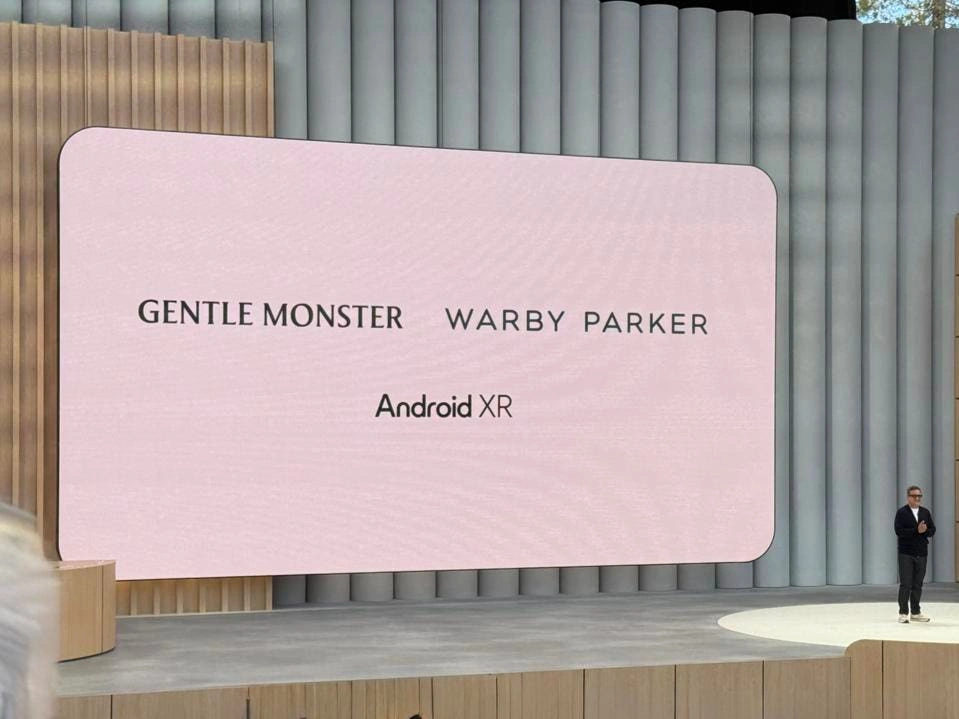Why Google’s Smart Glasses in 2025 Might Actually Be Worth Wearing

Google’s upcoming Android XR glasses might finally deliver what smart glasses have promised for years – a revolution in how we use technology. These glasses stand apart from earlier versions because they’re built in the Gemini era and offer a truly useful wearable experience through an AI-powered ecosystem of headsets and glasses.
Meta’s Ray-Ban smart glasses have expanded the possibilities with features like live translation. Google has taken this idea even further by teaming up with Gentle Monster and Warby Parker to create stylish options you’ll want to wear daily. On top of that, these glasses give you cameras, microphones, and speakers that connect to apps without needing your phone.
The most exciting part about these smart glasses is their optional in-lens display that shows private information and lets you save what you see to check later. Developers will start creating apps for this platform later this year, which will grow the ecosystem before launch. While Google hasn’t revealed the price yet, all these advanced features suggest they’ll cost more than current options in the market.
What makes Google’s 2025 smart glasses different
Google’s 2025 smart glasses are different from their competitors because of ground-breaking features that solve problems from earlier versions. These glasses aim to be your helpful daily companion instead of just another gadget.
Built on Android XR with Gemini AI
Android XR, Google’s platform for extended reality devices, powers these glasses. This gives users and developers a familiar platform that opens up new possibilities. On top of that, it comes with Gemini AI that turns these glasses from basic notification displays into smart assistants that understand context.
The glasses handle private information right on the device while using cloud computing for bigger tasks. This mix gives you quick responses and advanced AI features without needing constant internet access. The built-in AI learns your needs based on what you see, your location, the time, and how you use the glasses.
Hands-free interaction with real-life context
These glasses go beyond showing notifications – they understand what’s in front of you and show helpful information right away. To name just one example, look at a restaurant and the glasses show you ratings, popular dishes, or tell you if your friends have been there.
You can speak naturally to control the glasses instead of learning special commands. The glasses also track your eye movements and respond to simple hand gestures when you can’t use voice commands.
Designed for daily wear and comfort
Google took lessons from earlier attempts and made comfort just as important as features. The new model weighs much less than before, and the weight spreads evenly so you can wear them longer.
Working with 10-year-old eyewear brands means these glasses are genuine fashion pieces. You can pick from many frame styles, materials, and colors that match your style priorities.
The glasses last all day on a single charge with normal use. A small charging case gives you quick power boosts throughout the day when you use demanding features like translation or navigation constantly.
Key features that make them useful in everyday life
Google’s 2025 smart glasses do more than just look good – they add real value to your daily life. These aren’t just another tech accessory. They’re practical tools that solve actual problems.
Live translation in real time
You won’t need to type phrases into translation apps anymore. These smart glasses easily translate between French, Italian, Spanish, and English—no wifi needed. The system works with complex languages like Hindi and Farsi too, translating conversations as they happen.
Picture having subtitles in real life. Someone speaks in another language, and their words appear translated through your lenses. Your responses get translated back to them right away. This two-way, smart communication breaks language barriers in ways we couldn’t imagine before.
Navigation and directions through AR overlays
The glasses make finding your way around feel natural. A quick look up shows you turn-by-turn walking directions right in front of you. Look down and you’ll see a floating street map that shows exactly where you are.
You can ask questions like “Will that bus take me anywhere near Chinatown?” and get immediate answers. This hands-free system helps you stay aware of your surroundings – especially when you have to watch where you’re going, like while cycling or hiking.
Voice-controlled messaging and scheduling
“Send Dieter an invite for coffee at 3 p.m. today” – simple commands like these help you manage your communications without touching any devices. The glasses combine smoothly with your calendar and messaging apps. You can schedule meetings, send messages, and organize your day just by talking naturally.
The system understands context better than older voice interfaces. It double-checks details before taking action to keep your communications accurate.
Photo and video capture without a phone
These glasses pack a 12MP ultrawide camera that takes high-quality photos and video clips (up to 1080p) with a simple tap or voice command. You stay in the moment because you’re not reaching for your phone – whether you’re walking your dog, carrying groceries, or playing with your kids.
LED lights show when the camera is recording to protect privacy.
Contextual memory for smarter assistance
The sort of thing I love about these glasses is how they remember what they see. Ask “What was the name of that coffee shop I visited earlier?” and they’ll tell you the name, show photos, or guide you back there.
This memory feature marks a big step forward in contextual computing. It’s a great way to get help for seniors or people with memory issues, offering medication reminders, face recognition, and guidance for everyday tasks.
Design and partnerships that make them wearable

Smart glasses technology at Google goes beyond just the tech specs – they must create eyewear people will actually wear. Google learned from its past mistakes and moved to a completely new approach.
Collaborations with Gentle Monster and Warby Parker
Google built mutually beneficial alliances with two unique eyewear brands to create glasses that appeal to consumers. Gentle Monster, the South Korean brand, brings its avant-garde designs and celebrity status – their frames grace the faces of Beyoncé, Rihanna, and Billie Eilish. Warby Parker, with its network of 270 physical stores across North America, makes stylish frames available through its direct-to-consumer model.
These partnerships show Google’s strategy to reach different market segments, from premium to affordable, while keeping design at the forefront. Google’s commitment shows in their $75 million investment in Warby Parker’s product development and commercialization.
Optional in-lens display for private viewing
Google’s 2025 model has an optional in-lens display that sets it apart from earlier smart glasses. Users can view helpful information privately. The display lets you frame photos, read text messages, and follow navigation without others seeing your screen.
The display stays understated – the technology aims to boost daily activities without drawing attention, similar to the ‘quiet luxury’ trend in high-end design.
Focus on style, comfort, and all-day usability
These glasses work seamlessly with your phone throughout the day. Users can access apps without reaching for their phones. Google’s partnership strategy recognizes a vital fact: smart glasses must integrate into the existing eyewear ecosystem, including prescription options.
“We know that these need to be stylish glasses that you’ll want to wear all day,” explains Shahram Izadi, Google’s VP of Android XR. “We want you to be able to wear glasses that match your personal taste”.
This marks a clear break from Google Glass. The focus now lies on subtle technology that works with your vision rather than competing for attention.
How developers and users will shape the future
Google understands that its Android XR platform’s success relies on its ecosystem of developers and users, unlike previous smart glasses attempts. The company wants to avoid past mistakes by making this technology available to everyone.
Open platform for app development
Android XR serves as an open, unified platform built for XR headsets and glasses. Users can choose from more devices and still use their favorite apps. Developers get a unified environment to create experiences for devices of all types with familiar Android tools.
“We’re inviting developers, device makers and creators everywhere to join us in shaping this next evolution of computing,” states Google officially in their announcement.
Google has expanded its Samsung partnership beyond headsets to bring Android XR to glasses. Both companies are building a software and reference hardware platform that will help the broader ecosystem create great glasses. The platform will open for developers to start building later this year.
Privacy-first approach with trusted testers
A small group of trusted testers now provides feedback on Google’s prototypes. Ground testing ensures they build technology that protects privacy for users and people around them.
“To help make sure we’re building a truly assistive product that respects privacy for you and those around you, we’ve begun gathering feedback on our prototypes with trusted testers,” explains Google.
Integration with existing Google services
Android XR’s biggest advantage lets favorite mobile and tablet apps from Google Play work right away. These glasses work with your phone through tethered or wireless pairing and sync contacts, messages, notifications smoothly.
The platform connects to Google Play app store directly, like Apple’s Vision Pro connects to Apple’s iOS App Store. This integration helps existing Android users adopt the technology and creates a continuous connection across devices.
Google will share updates about device availability through their newsletter as they refine this technology. This keeps interested users informed about future developments.
Conclusion
Google’s 2025 smart glasses look ready to succeed where other attempts failed. These glasses strike the right balance between technology and wearability, function and fashion, and innovation with practicality. They have a real shot at becoming the first mainstream smart eyewear that people will actually use.
The mutually beneficial alliances with brands like Gentle Monster and Warby Parker show Google’s dedication to creating eyewear people want to wear. It also integrates Gemini AI to transform these devices from basic notification displays into smart assistants that understand your surroundings and predict what you need.
The best proof of Google’s new approach comes from their focus on ground utility. These glasses solve real problems with features like live translation, AR navigation overlays, and contextual memory instead of just showing off tech capabilities. They track what you see, know what you need, and help without asking for constant attention.
The huge investment in hardware and software development points to premium pricing, though exact details aren’t public yet. In spite of that, many users might find the practical benefits worth the cost, especially those who value hands-free information access throughout their day.
The Android XR platform will open to developers later this year, and the ecosystem should grow faster. This developer-friendly approach paired with Google’s privacy-first testing creates strong foundations for growth beyond the original launch.
Google’s 2025 smart glasses aren’t just another gadget – they’re a fresh take on how wearable tech can boost our daily lives without taking them over. The future of smart glasses looks clear, and this time, we might actually want to put them on.

